Love what you write.
I say it a lot. It is the single piece of advice I always offer when asked what tips I would give to young writers (young of age, young of career). And I believe the advice is sound. Love what you write means a few things. It means love the process, love the act of creation, because writing is hard and isolating and, for most of us, not very profitable. It means write the story that burns in your soul, the story you ache to write, because if you write a story for which you have little passion in the hope of matching the market, chances are you will write an inferior story (and still miss the market, which is a moving target). And it means take time to appreciate your achievement in completing a story, in writing a great scene, in creating something entirely your own, because, as I say, writing is hard, and so is the publishing business, and we need to recognize our own successes.
But here’s the thing: We can’t always love what we write, and we certainly can’t always write what we love. Writing is an art, of course. It is creation. It can be fun and thrilling, soothing and healing. It can feed the soul.
It is also a business, a way of making a living. I am happiest when writing stuff that excites and nourishes me. Writing the Radiants books and the Chalice War trilogy was incredibly fun, and also a balm in a time of emotional turmoil. In the past, though, I have also written not for joy but for a paycheck. That is part of what I do. I have written media tie-in books that I would never, ever have written if not for the promise of money at the end of the process.
That may sound crass. So be it. I am a professional, which can mean a lot of things, some of them positive and dignified, some of them mercenary. I bring this up today, because I am on the verge of signing a contract for new work-for-hire writing. I can’t talk about the particulars right now. At some point, I’ll be able to. But I can discuss the process in general terms and even give some tips for dealing with this sort of work.
The thing about work-for-hire writing and media tie-in projects is that they are, in many instances, not necessarily what we would choose to write if left to our own preferences. Obviously this is not always the case. I have several colleagues who spend a good deal of time writing in the Star Wars universe, or the Star Trek universe, or some other genre franchise. And they love the work. They enjoy playing with characters they have grown attached to over the years, much as I enjoy playing with Thieftaker characters in new situations.
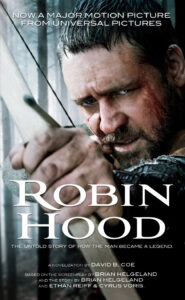 But the media work I have done in the past wasn’t like that. Back in 2009-2010, I wrote the novelization of Ridley Scott’s movie Robin Hood, starring Russell Crowe and Cate Blanchett. The movie wasn’t out yet — I worked from a script — and I didn’t know whether or not I would love it. (I didn’t.) In 2018, I wrote a novel that tied in with the History Channel’s Knightfall series about the Knights Templar. In this case, I got to see all the episodes of the first season before the series was aired. I liked the show well enough.
But the media work I have done in the past wasn’t like that. Back in 2009-2010, I wrote the novelization of Ridley Scott’s movie Robin Hood, starring Russell Crowe and Cate Blanchett. The movie wasn’t out yet — I worked from a script — and I didn’t know whether or not I would love it. (I didn’t.) In 2018, I wrote a novel that tied in with the History Channel’s Knightfall series about the Knights Templar. In this case, I got to see all the episodes of the first season before the series was aired. I liked the show well enough.
In both cases, though, I always felt as though I were playing with someone else’s toys, which made the writing a bit challenging. I didn’t have the freedom I feel when working on my own stories in my own worlds. So, how did I make the work tolerable? DID I make the work tolerable? Good questions.
1) Look for something — anything — that allows you to take ownership of the project. This was particularly tough with the Robin Hood book, because the studio with whom I contracted maintained a death-grip over every element of the story. I could not add or delete ANY dialogue or scenes from the screenplay. I was utterly at the mercy of the script and the shoot, although the studio heads were so secretive, they would not allow me to see the movie!! I had to work from stills and from a couple of two minute movie-theater trailers. That was it!
So how did I take ownership? Point of view. I was in the minds of the characters, and since no internal monologue can be scripted, I could do with those passages whatever I wanted (to a point). There is one scene in the book of which I’m particularly proud — it’s written from the point of view of an old and fading Richard the Lionheart and I believe I nailed it.
 With the Knightfall book, I had a good deal more freedom and control, and so I enjoyed the process much, much more. But still I was mostly writing from the viewpoint of someone else’s characters. There is one point of view character, though, who I made my own — a child who appears later in the series as an adult. But her childhood POV was mine and gave me that sense of ownership, of personal investment in the book.
With the Knightfall book, I had a good deal more freedom and control, and so I enjoyed the process much, much more. But still I was mostly writing from the viewpoint of someone else’s characters. There is one point of view character, though, who I made my own — a child who appears later in the series as an adult. But her childhood POV was mine and gave me that sense of ownership, of personal investment in the book.
2) Take pride in what is yours and acknowledge the limitations placed upon you by what is not. Put another way, write the best book you can given the flaws inherent in the larger franchise. Robin Hood is not a great book. Robin Hood was not a great movie (though I believe it was better than many critics said). I believe I did as much with the book as I could under the circumstances, and that is all I can ask of myself.
3) Accept that work-for-hire makes possible the stuff we WANT to write. There is nothing wrong with writing for money. Hell, that’s what nearly all of us strive for when we begin this professional journey. When people ask me which of my books are my favorites, I never mention Robin Hood or Knightfall. But I don’t shy from talking about the experience of writing the books. I’m not ashamed of having written them. I’m a professional writer, and in both cases the media work provided a necessary financial bridge between personal projects. Without Robin Hood, I might not have written the Thieftaker books. Without Knightfall, I might not have written the Islevale Cycle.
Media tie-in, work-for-hire — call it what you will. This sort of work is part of the business, and while it may not be my favorite sort of book to write, it is part of what I do to maintain my career and to pay a few bills. If work of this sort comes your way, jump at the opportunity. The money is good and the publications bring exposure and possibly more jobs. Just remember to make the work your own in some way.
Keep writing!!









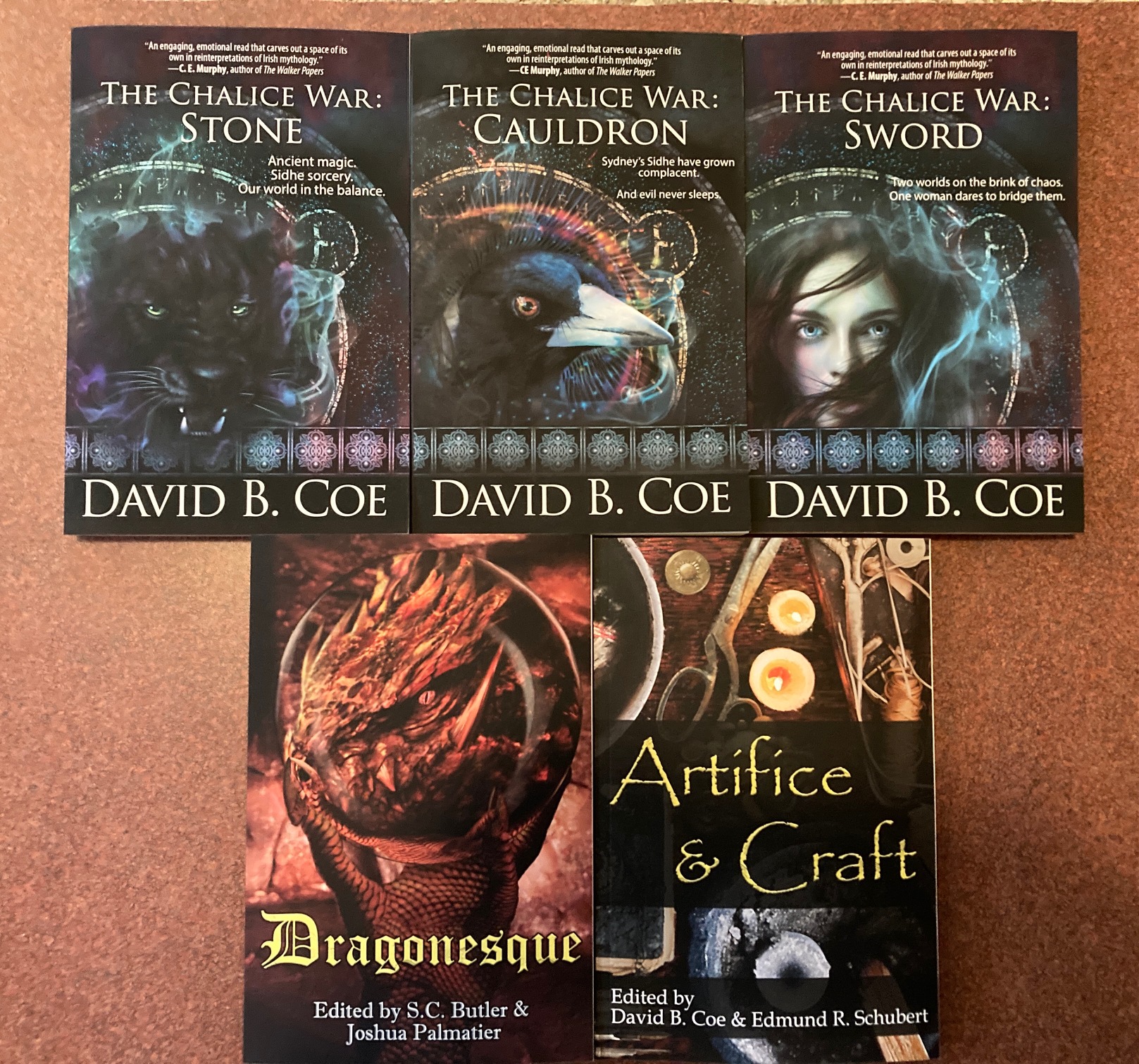
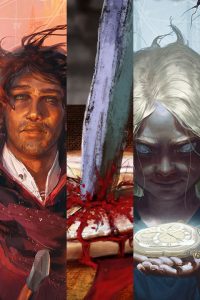 Which is another way of saying that innovation for the sake of innovation is not necessary or advised. Yes, it’s fun and challenging to write books or stories that don’t conform to simple linear narrative. I learned that with the Islevale Cycle, my time travel/epic fantasy series. And if you have ideas for playing with chronology or otherwise changing up your narrative style, by all means give it a try. But don’t feel that you have to. There are plenty of books, movies, plays, and stories out there that conform to regular old narrative form, and they do just fine. Better to write a story in the normal way and have it come out well, than to change things up just for the purpose of doing so, and thus leave your audience confused.
Which is another way of saying that innovation for the sake of innovation is not necessary or advised. Yes, it’s fun and challenging to write books or stories that don’t conform to simple linear narrative. I learned that with the Islevale Cycle, my time travel/epic fantasy series. And if you have ideas for playing with chronology or otherwise changing up your narrative style, by all means give it a try. But don’t feel that you have to. There are plenty of books, movies, plays, and stories out there that conform to regular old narrative form, and they do just fine. Better to write a story in the normal way and have it come out well, than to change things up just for the purpose of doing so, and thus leave your audience confused.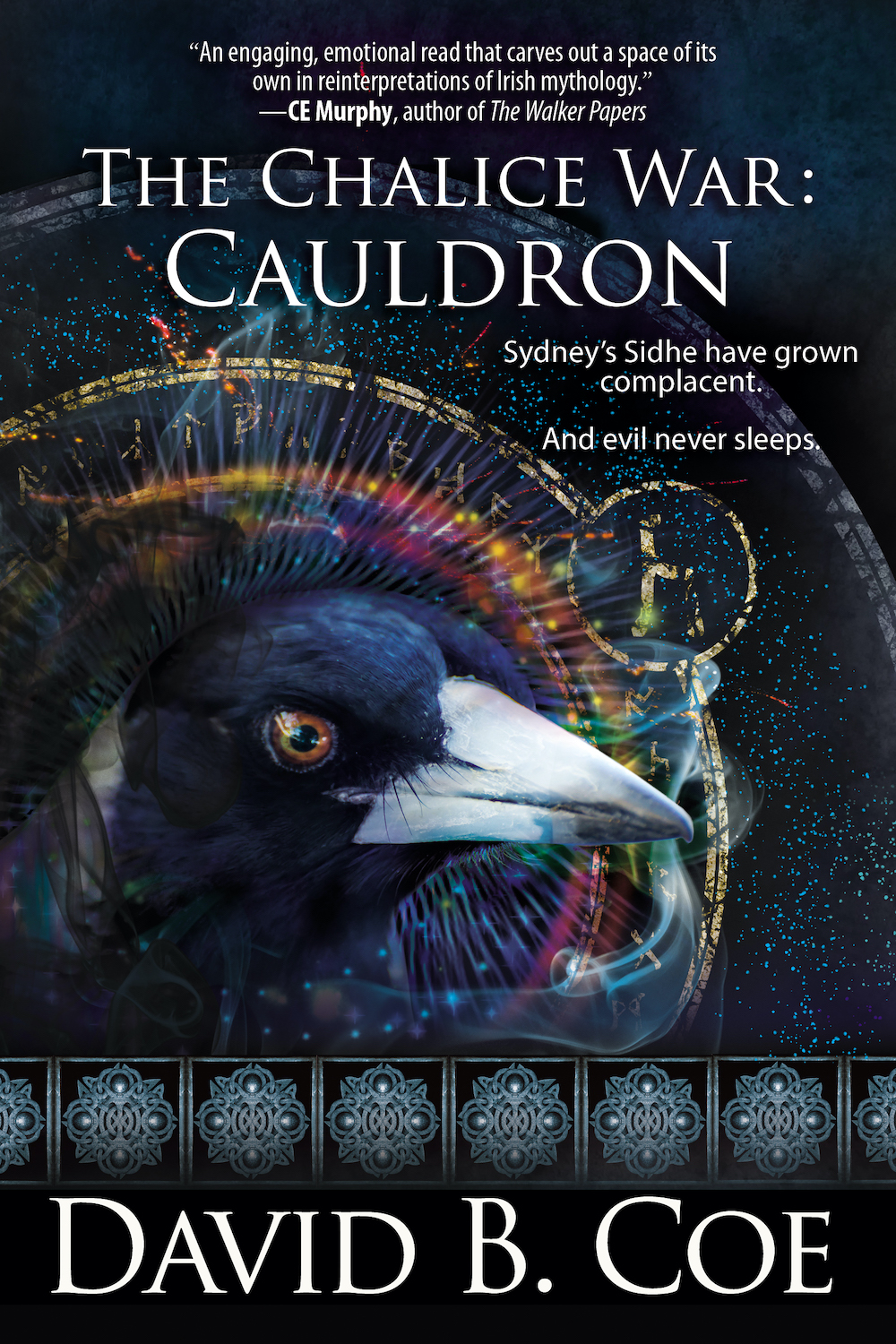 This Friday — the day after tomorrow!! —
This Friday — the day after tomorrow!! — 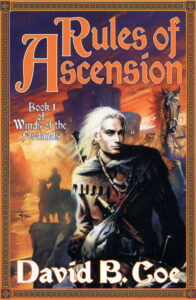 I continue to read through and revise the books of my Winds of the Forelands epic fantasy series, a five-book project first published by Tor Books in 2002-2007. The series has been out of print for some time now, and my goal is to edit all five volumes for concision and clarity, and then to re-release the series, either through a small press or by publishing them myself. I don’t yet have a target date for their re-release.
I continue to read through and revise the books of my Winds of the Forelands epic fantasy series, a five-book project first published by Tor Books in 2002-2007. The series has been out of print for some time now, and my goal is to edit all five volumes for concision and clarity, and then to re-release the series, either through a small press or by publishing them myself. I don’t yet have a target date for their re-release. We are often our own most unrelenting critics. This is certainly true for me in other elements of my life. I am hard on myself. Too hard. And, on a professional level, I am the first to notice and criticize flaws in my writing. So reading through old books in preparation for re-release is often an exercise in self-flagellation. It was with the LonTobyn reissues that I did through Lore Seekers Press back in 2016. And it is again with the Winds of the Forelands books.
We are often our own most unrelenting critics. This is certainly true for me in other elements of my life. I am hard on myself. Too hard. And, on a professional level, I am the first to notice and criticize flaws in my writing. So reading through old books in preparation for re-release is often an exercise in self-flagellation. It was with the LonTobyn reissues that I did through Lore Seekers Press back in 2016. And it is again with the Winds of the Forelands books.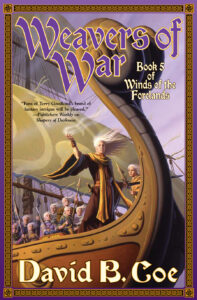 As I have read through this first book in the story, polishing and trimming the prose, I have rediscovered that narrative. I remember far less of it than I would have thought possible. Or rather, I recall scenes as I run across them, but I have not been able to anticipate the storyline as I expected I would. There are so many twists and turns, I simply couldn’t keep all of them in my head so many years (and books) later.
As I have read through this first book in the story, polishing and trimming the prose, I have rediscovered that narrative. I remember far less of it than I would have thought possible. Or rather, I recall scenes as I run across them, but I have not been able to anticipate the storyline as I expected I would. There are so many twists and turns, I simply couldn’t keep all of them in my head so many years (and books) later.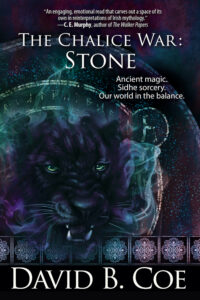 Let’s back that up with a little math. I said a moment ago that, were I to start a Patreon, I would be happy with contributions of $1.00 per week, which comes to $52.00 for the year. Now, as it happens, I have the first book of
Let’s back that up with a little math. I said a moment ago that, were I to start a Patreon, I would be happy with contributions of $1.00 per week, which comes to $52.00 for the year. Now, as it happens, I have the first book of 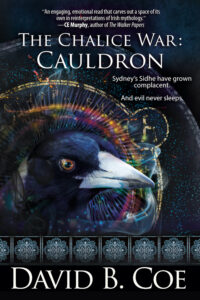 So, for about what you might give to a Patreon, you could have all the blog posts AND all three books in the new series.
So, for about what you might give to a Patreon, you could have all the blog posts AND all three books in the new series.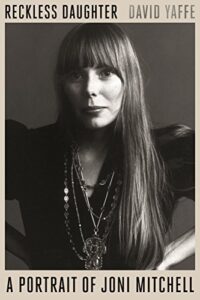 Recently, I have been reading a biography of Joni Mitchell (a holiday gift from my older daughter), a long-time favorite of mine and, in my opinion, the finest songwriter in the history of rock and roll (more on that shortly). It’s been an interesting read — the author is a bit fawning for my taste, and a bit too eager as well to weave Mitchell’s (admittedly phenomenal) lyrics into his prose. But as is often the case when I read biographies of artists I admire, the book made me think about creativity and the artistic process.
Recently, I have been reading a biography of Joni Mitchell (a holiday gift from my older daughter), a long-time favorite of mine and, in my opinion, the finest songwriter in the history of rock and roll (more on that shortly). It’s been an interesting read — the author is a bit fawning for my taste, and a bit too eager as well to weave Mitchell’s (admittedly phenomenal) lyrics into his prose. But as is often the case when I read biographies of artists I admire, the book made me think about creativity and the artistic process. And I did. The book was Invasives, by the way. It contains the best character work I’ve ever done, and that is no coincidence.
And I did. The book was Invasives, by the way. It contains the best character work I’ve ever done, and that is no coincidence. For the past several weeks, I have been sharing “My Best Mistakes,” which have included
For the past several weeks, I have been sharing “My Best Mistakes,” which have included 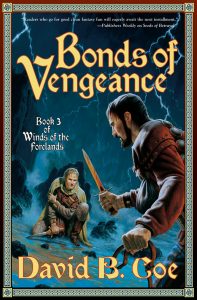 My first series, the LonTobyn Chronicle, did well. It won the Crawford Award as the best fantasy by a new author, and my sales grew steadily. Children of Amarid would eventually go through six printings. When I signed contracts for my second series of novels, Winds of the Forelands, Tor gave me significantly higher per-book advances.
My first series, the LonTobyn Chronicle, did well. It won the Crawford Award as the best fantasy by a new author, and my sales grew steadily. Children of Amarid would eventually go through six printings. When I signed contracts for my second series of novels, Winds of the Forelands, Tor gave me significantly higher per-book advances.